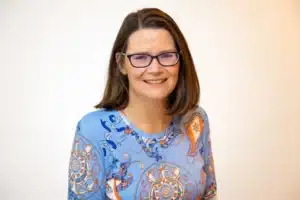
We’re continuing our discussion of CovingtonAlsina’s Hierarchy of Financial Priorities, specifically focusing on cash flow. Today we’ll cover credit card debt and conscious spending.
If you have credit card debt, there are three ways to tackle it. First, and I have to say it’s my least favorite, is the avalanche method. You pay the minimum on your debts, and everything extra you can spare goes to the account with the highest loan balance. Once that is paid off, you focus on the next largest balance, and so on. The problem I have with this method is that it takes a while to see concrete results and requires serious discipline to keep at it without any sense of satisfaction.
The second method is the snowball method; it’s the opposite of the avalanche. You put all your extra money towards the account with the smallest balance. This provides significant psychological satisfaction, and reasons to continue – you feel success each time another account is paid off.

The most financially sound method is to pay off the account with the highest interest rate first. You will pay the least amount of interest overall and finish the soonest. However, sometimes the positive reinforcement you receive from the snowball method will encourage you to stick with the plan.
If you have significant debt, consolidating into a personal loan, or balance transfers to a card with zero percent interest, can also help reduce the time it takes to pay off your debts. If you’re not good with these kinds of calculations, talking with a financial planner (look for someone with the CERTIFIED FINANCIAL PLANNER™ designation) can help.
Regardless of the method you use, tracking your financial picture with regular reviews of account balances – both savings and debt – will help keep you moving towards your goals. Dr. Edward Deming, an NYU professor, often said “That which is measured improves.” A big part of achieving your financial goals is having a plan, and regularly reviewing it to make sure you’re on track.
As you’re looking at cash flow, it’s important to focus on conscious spending, and making choices with our money. Our brains don’t work well with deprivation. Saying “I can’t, I’m on a budget” tends to blow up, and lead to overspending. Recognizing that you can buy the throw pillow or coffee mug, or stop for food on the way home, but consciously choosing something you want more, works well. If you say to yourself “I’m not going to buy this, because I want to take that trip”, you’re more likely to stick with your budget in the long run. I even encourage people to make a chart for your refrigerator. Every time you don’t buy something, transfer that money to the vacation account, or towards a credit card debt, or whatever other goal you have. Then color in the chart to show yourself the progress you’re making.

Our blog has covered numerous ways to help with spending, and you can read that here. If you have questions, email us at info@covingtonalsina.com. We’ll continue in the next column with emergency savings.
Investment advice offered through Great Valley Advisor Group, a Registered Investment Advisor. Great Valley Advisor Group and CovingtonAlsina are separate entities. This is not intended to be used as tax or legal advice. Please consult a tax or legal professional for specific information and advice. The opinions voiced in this column are for general information only and are not intended to provide specific advice or recommendations for any individual.
Disclaimer: The views and opinions expressed on Annapolis Moms Media and its affiliates are those of the authors and/or experts and do not necessarily reflect the official policy or position of Annapolis Moms Media. Any content provided by our bloggers or authors are of their opinion, and are not intended to malign any religion, ethnic group, club, organization, company, individual or anyone or anything.
The published article is available for informational purposes only and is not considered licensed professional advice on any subject matter. By viewing articles/blog posts, the reader understands there is no client relationship between the reader and the publisher and its authors. The article/blog should not be used as a substitute for professional advice from a licensed professional, and readers are urged to consult their own counsel on any specific questions concerning a specific situation.




